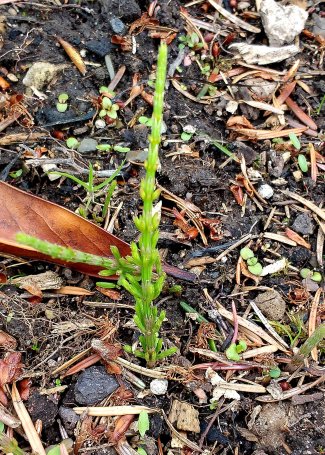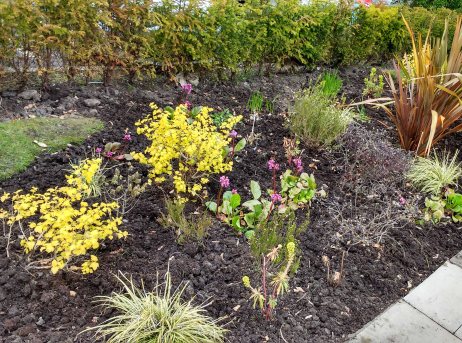A month ago I wrote about how excited I was that I was going to be working with 6 volunteers. Unfortunately, due to illness, they had to cancel. They re-booked to come today. Like last time the weather was fabulous, so we were able to get on with painting the planters that I had hoped to do last time. And what a difference the “Red Cossack” paint has made.
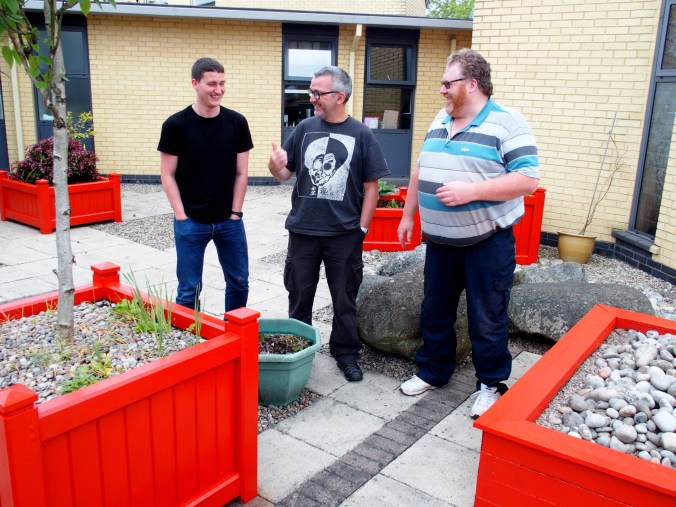
Dan, Paul and Barry after painting the planters
We also had time to paint the Chines Bridge that was kindly donated to the Hospice by The Whitworth Art Gallery in Manchester. The bridge has made a real difference to the gardens by adding a focal point around the ponds.

Painting the Chinese Bridge
I want to thank Dan, Paul and Barry, who work for The Dept for Works and Pensions, for their help today and for their company. They seemed to enjoy themselves, getting away from their computers and helping others (especially me!). CHEERS!
I’ve had some lovely times at work recently, although it was rather wet earlier this week. The rain was much needed though by the plants and it has saved me doing any more watering. The downside of the rain is that the weeds have gone a bit mental. Why is it that they seem to grow twice as fast as the plants you want to be growing? This could become a blog all about weeds, but don’t worry – it won’t! However, weeding does take up a lot of my time. This week I have been tackling cleavers and bittercress, as well as the ongoing battle with the horsetail. Both cleavers and bittercress have interesting methods of dispersal. Cleavers, or as I prefer to call it – “Sticky Willy”, is every child’s favourite weed. It’s the one which sticks to anything and everything, so the challenge is to stick it to your friends without them noticing. By being so sticky, the seeds get moved around. Bittercress on the other hand is much more conspicuous, but seems to get everywhere. Luckily it is easy to pull up. But as you do so, any seed heads that have formed, explode sending seeds in all directions. So as a gardener, the aim is to remove the weeds before they go to seed.
There have been some lovely flowers in the garden this week. Interestingly many of them are pink or purple. Here are a few that have taken my eye this week.
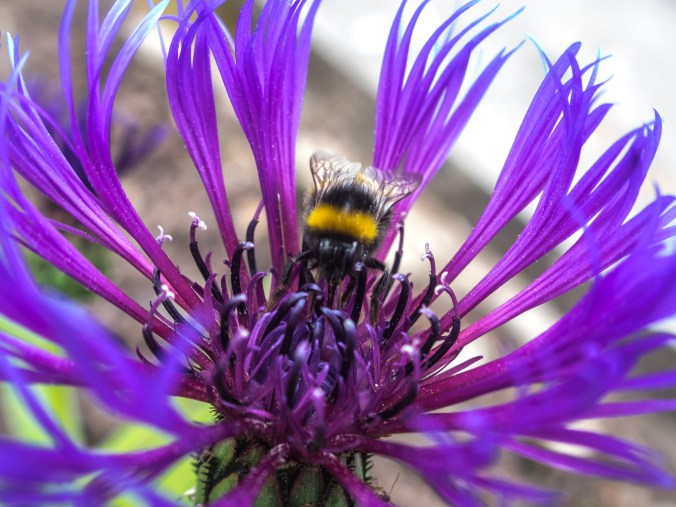
Mountain Cornflower and Bee
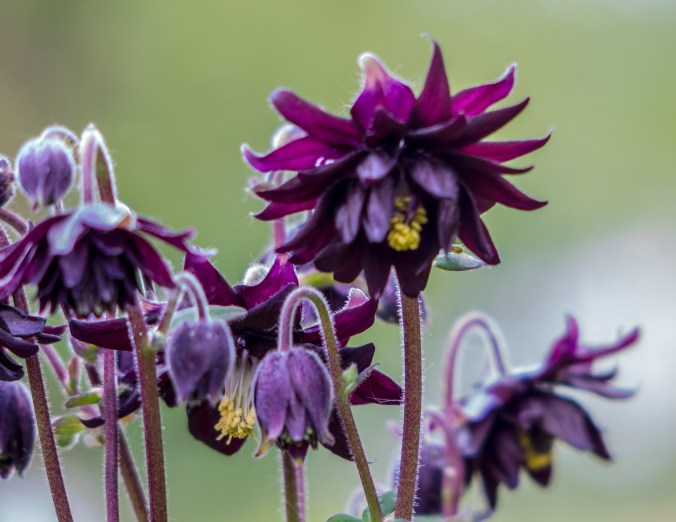
Aquilegia vulgaris var. stellata ‘Black Barlow’

Primula Pulverulenta
I am very excited about next week. I have been given a ticket to attend Chelsea Flower Show on Tuesday. I can’t wait. I’ll let you know next week how I get on. Until then, God Bless.
